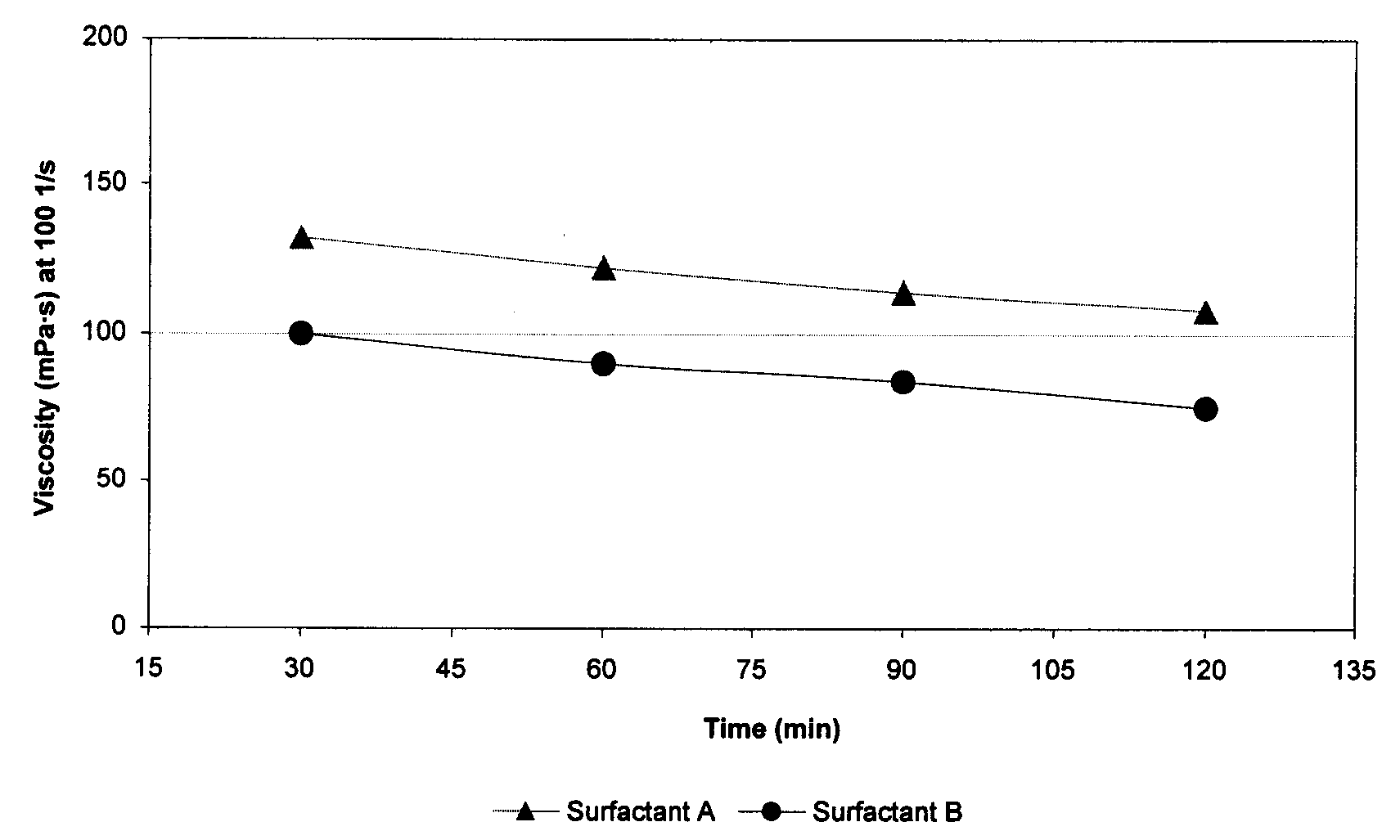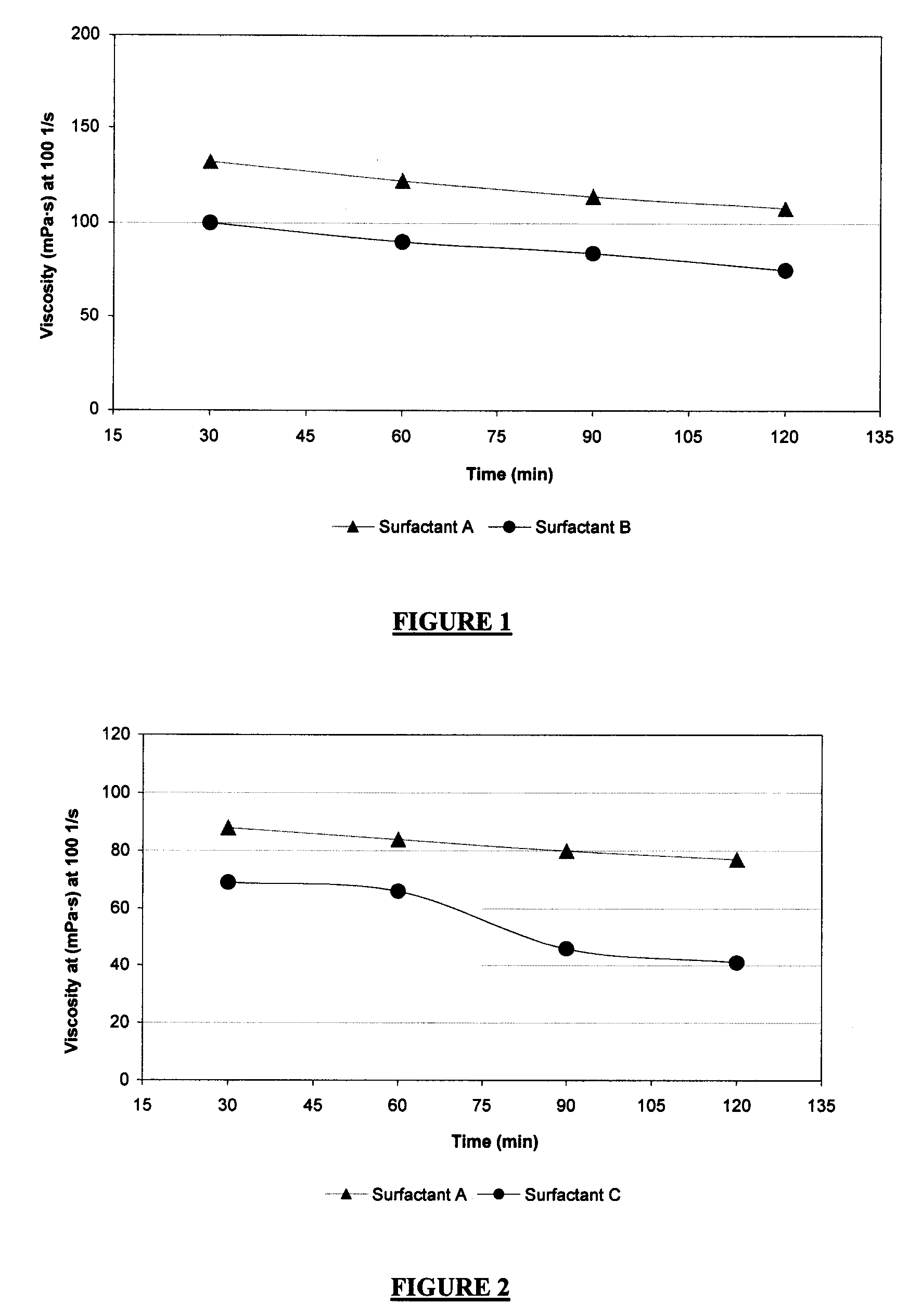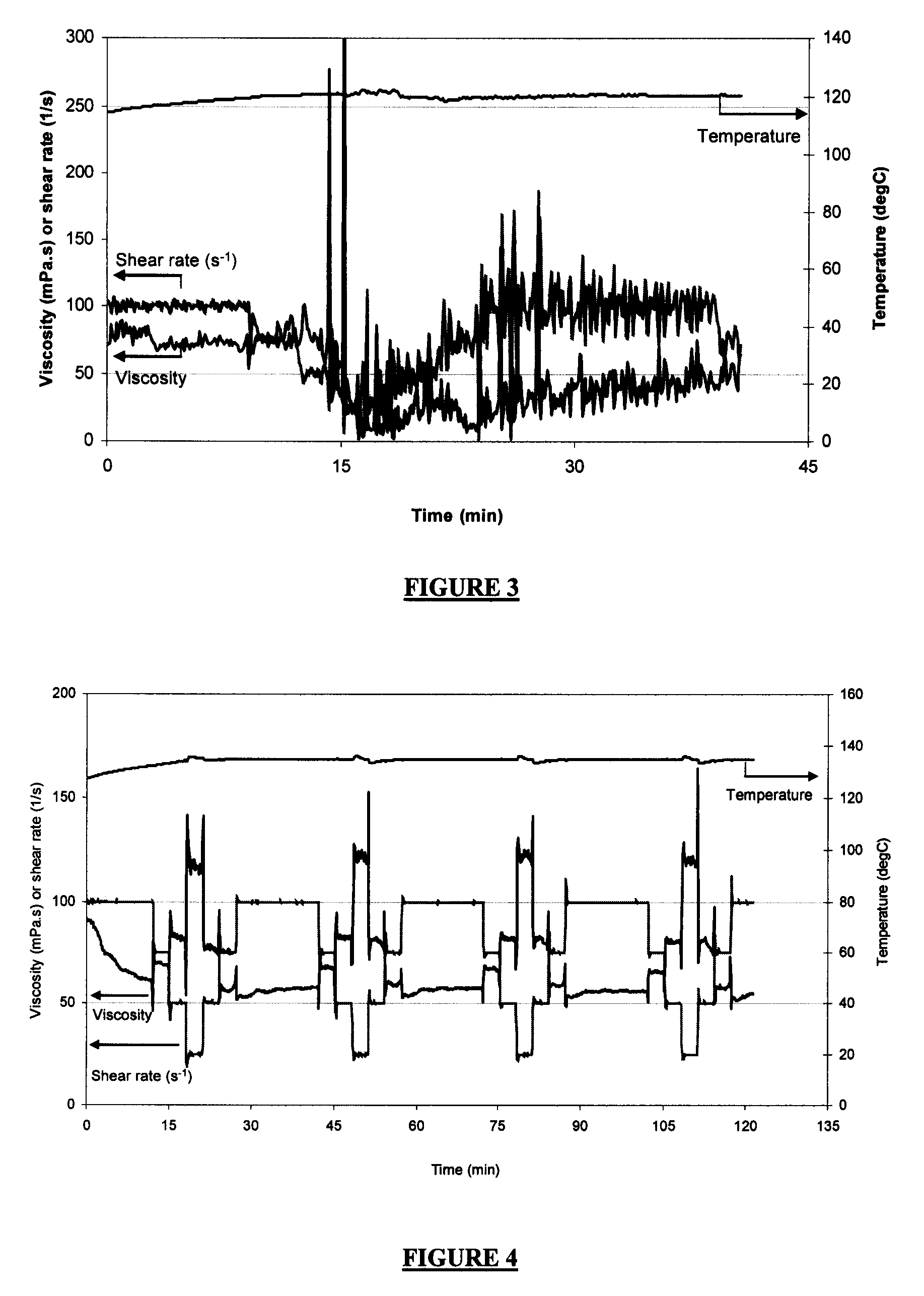Foaming Agent for Subterranean Formations Treatment, and Methods of Use Thereof
a technology of foaming agent and subterranean formation, applied in the field of fluids, can solve the problems of increasing difficulty in formulating stable foaming fluid with rheological properties suitable for fracturing operations, phase separation and loss of fluid viscosity, and increase the difficulty of fracturing operations
- Summary
- Abstract
- Description
- Claims
- Application Information
AI Technical Summary
Problems solved by technology
Method used
Image
Examples
example 1
[0074]Guar-based fluids energized with N2 were tested using Surfactants A and B at approximately 120° C. These energized fluids contained 0.6 wt % guar, 1.0 vol % surfactant A or B, and 0.1 wt % tetramethyl ammonium chloride, in aqueous solutions. Guar was added in a slurry form in which guar and diesel solvent each accounted for 50 wt % of the slurry. Foam quality was 70%, and the temperature was constant at about 120° C. The viscosity was measured at 100 s−1. The results are shown in FIG. 1, and indicate that Surfactant A provides better foam stability compared with Surfactant B at 120° C. in N2 foams. The sample using Surfactant A contained less active surfactant as compared with Surfactant B (30 wt % vs. 50 wt %) but the viscosity was approximately 35% greater for that for the sample using Surfactant B.
example 2
[0075]Guar-based fluids foamed with CO2 were tested using Surfactants A and C at approximately 120° C. The fluids contained 0.6 wt % guar, 1.0 vol % Surfactant A or C, and 0.1 wt % tetramethyl ammonium chloride. The results are presented in FIG. 2. FIG. 2 shows that Surfactant A provides significantly better foam stability compared with Surfactant C at 120° C. in CO2 foams. It can be seen that the foam viscosity measured at 100 s−1 by using Surfactant C fell below 50 mPa·s after 75 min. It is commonly accepted that 50 mPa·s is the minimum viscosity for fracturing applications. With Surfactant A, much greater viscosity was achieved even after 2 hours. Foam quality was 70%, and the temperature was constant at about 120° C.
example 3
[0076]A guar-based fluid foamed with N2 was tested using Surfactant D at approximately 120° C. The fluid contained 0.36 wt % guar, 1.0 vol % Surfactant D, and 0.1 wt % tetramethyl ammonium chloride. Guar was added in a slurry form in which guar and mineral oil each accounted for 50 wt % of the slurry. Foam quality was approximately 70% at time 0 min. The density and shear rate fluctuated as a result of the instable foam. The results are presented in FIG. 3. FIG. 3 illustrates that Surfactant D, a C12 sulfate, was unable to create a stable foam at 120° C. in N2 foams, and may suggest that the ethylene oxide units in Surfactant A may play an important role in providing greater foam stability. At the same gel loading, Surfactant A maintained the foam viscosity above 50 mPa·s at 100 s−1 for over 2 hours (see in FIG. 8).
PUM
| Property | Measurement | Unit |
|---|---|---|
| Temperature | aaaaa | aaaaa |
| Fraction | aaaaa | aaaaa |
| Fraction | aaaaa | aaaaa |
Abstract
Description
Claims
Application Information
 Login to View More
Login to View More - R&D
- Intellectual Property
- Life Sciences
- Materials
- Tech Scout
- Unparalleled Data Quality
- Higher Quality Content
- 60% Fewer Hallucinations
Browse by: Latest US Patents, China's latest patents, Technical Efficacy Thesaurus, Application Domain, Technology Topic, Popular Technical Reports.
© 2025 PatSnap. All rights reserved.Legal|Privacy policy|Modern Slavery Act Transparency Statement|Sitemap|About US| Contact US: help@patsnap.com



